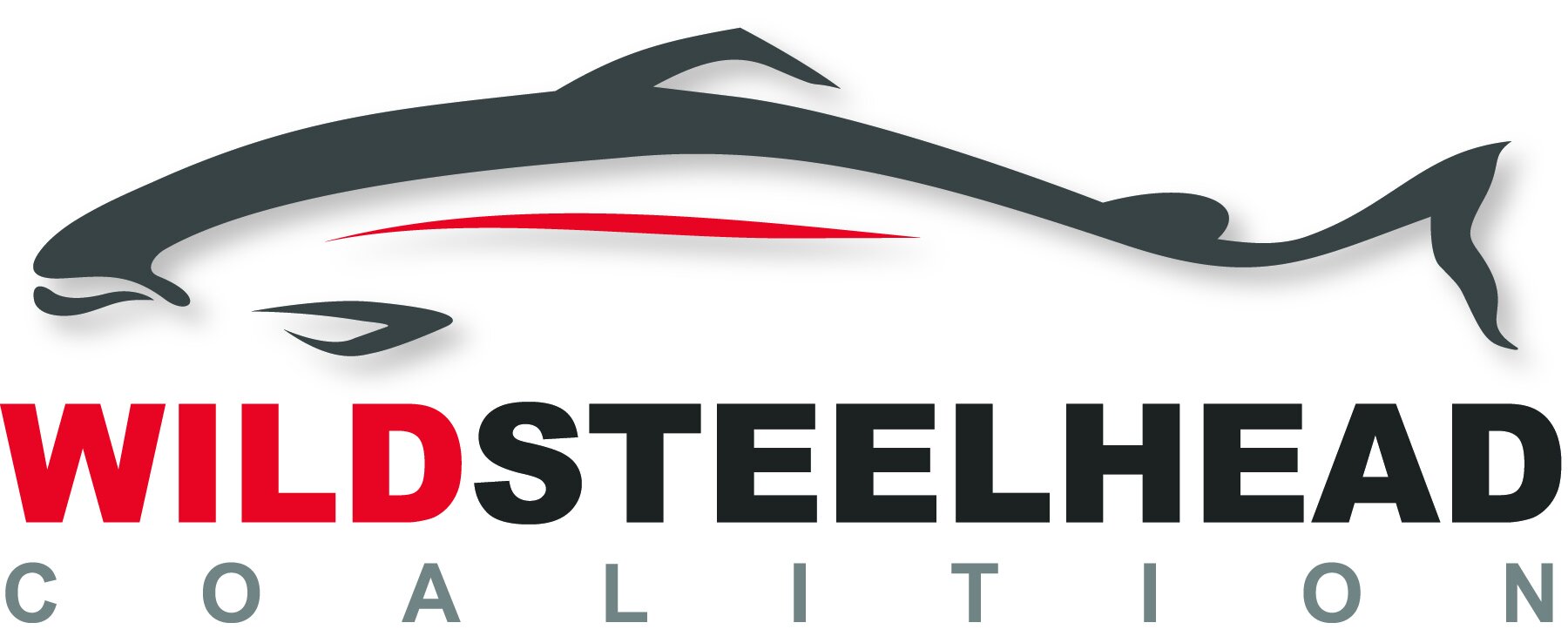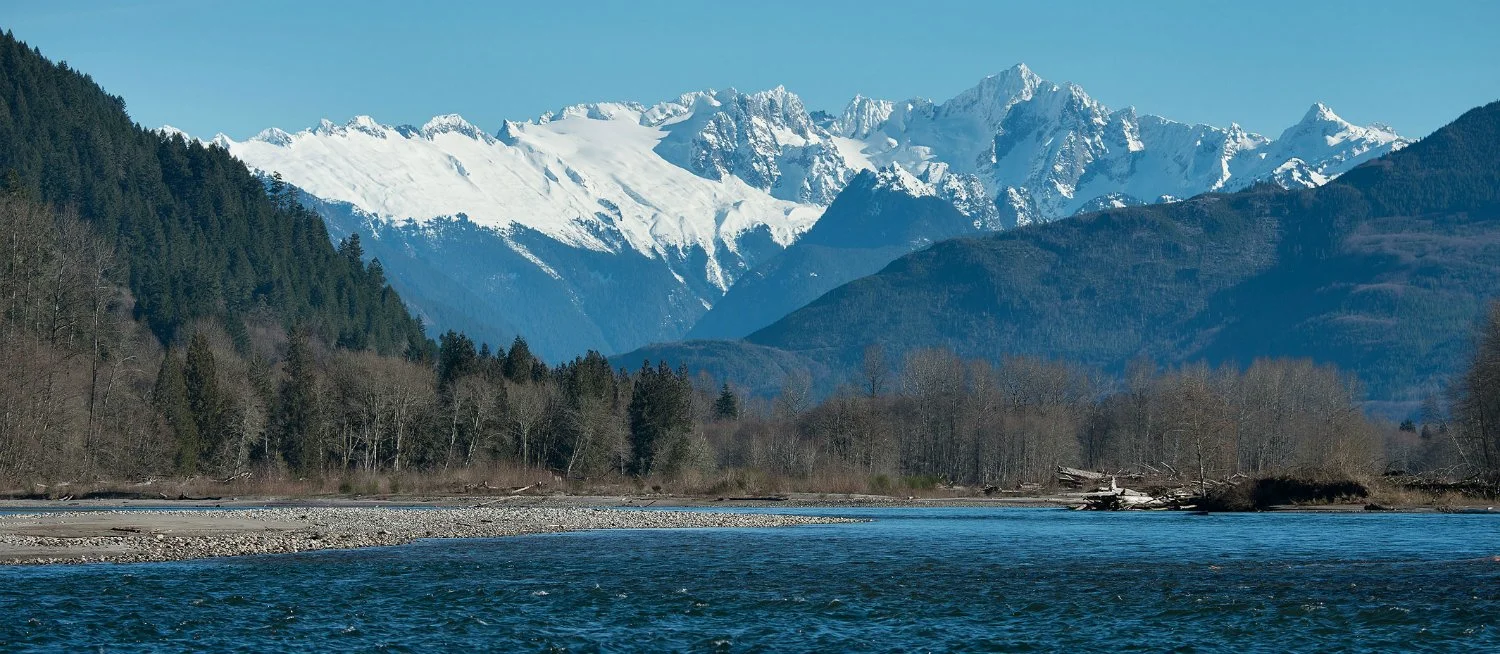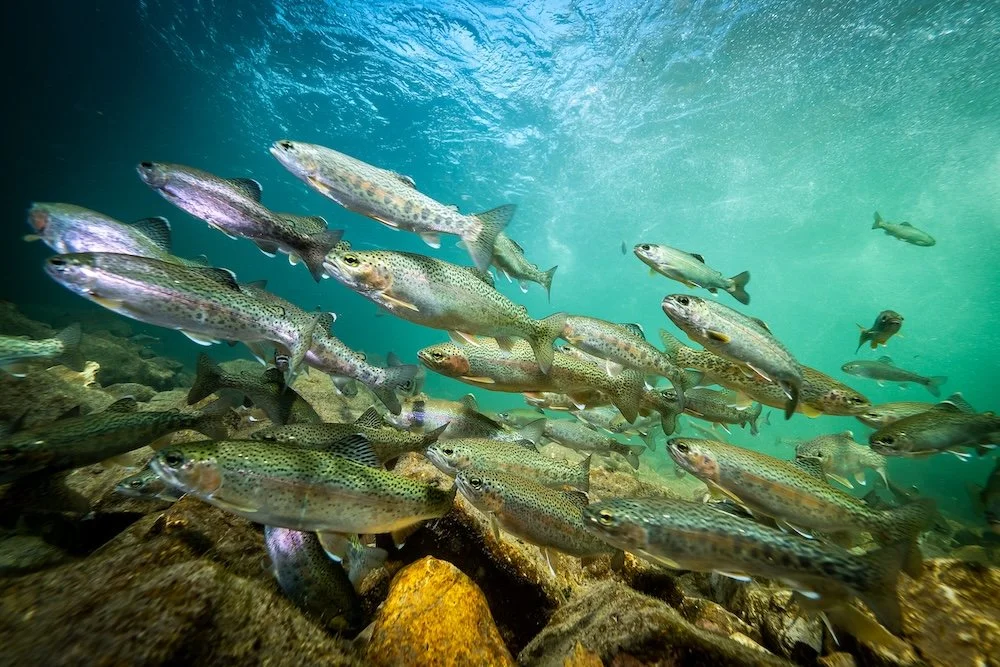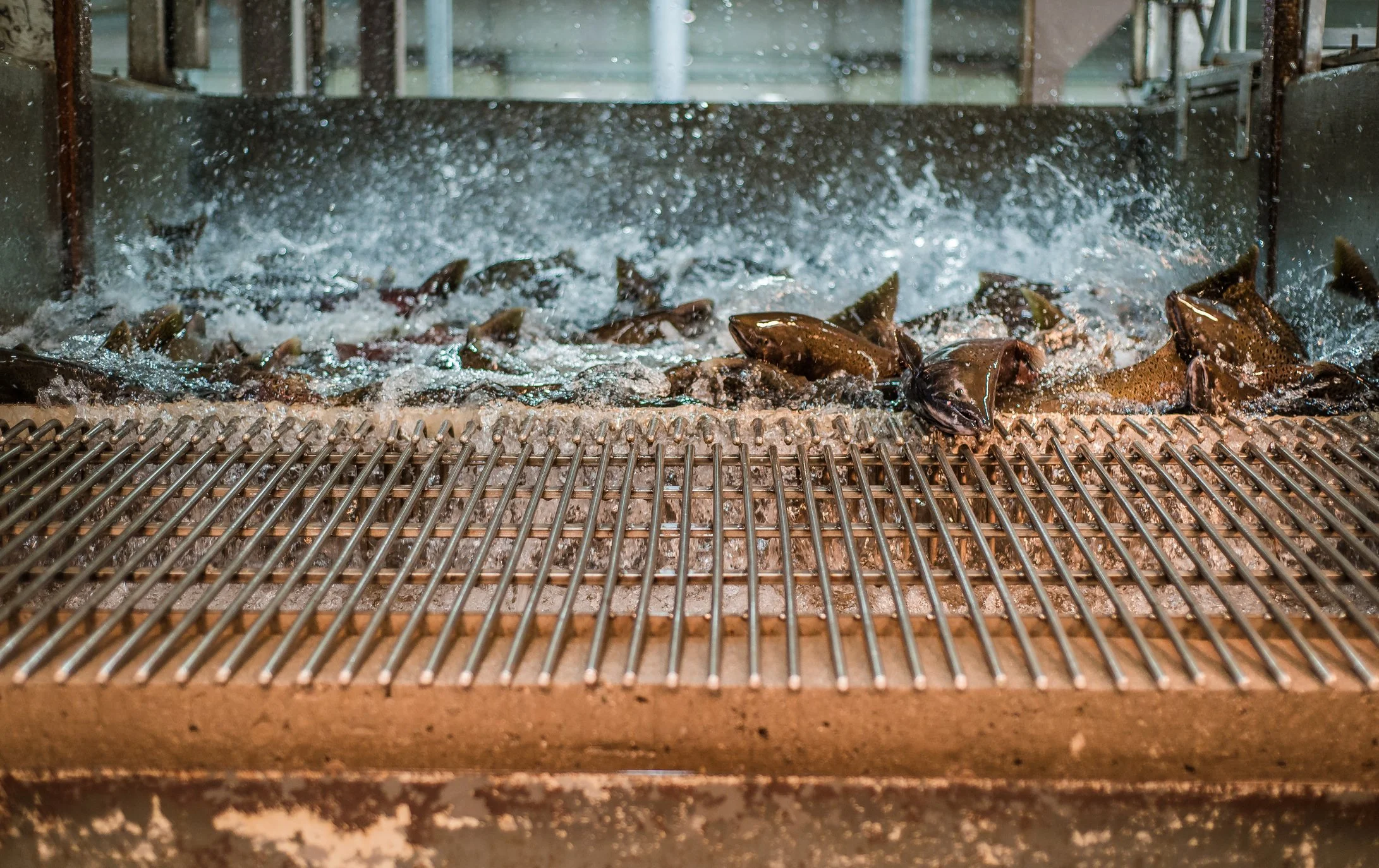
Wild Steelhead Coalition News and Updates
On Friday, November 14, the Fish and Wildlife Commission approved a new Resident Native Trout Fisheries Policy by an 8-1 vote, a landmark shift in how Washington State manages wild rainbow trout.
After a two-and-a-half-year process, the Wild Steelhead Coalition, working alongside partner conservation organizations, scientists, and anglers who submitted public comments, fundamentally changed the conversation. While our original petition called for a state-wide no-harvest policy for resident rainbow trout in rivers with wild steelhead, the Commission took a different path. What we achieved may prove equally significant: Washington now has its first-ever policy that prioritizes evidence-based conservation of wild resident trout over anecdotal justifications for harvest.
When the Canadian federal government recently announced a sweeping $500 million reduction in funding to Fisheries and Oceans Canada over the next four years, the implications for wild salmon and the communities that rely on them were immediate and alarming. In the heart of the Skeena River Valley region of British Columbia, monitoring efforts are already strained, escapement numbers are at historic lows, and the foundations of sustainable fisheries management are being undermined. The cuts not only signal a retreat from past political commitments to fisheries science and stewardship but also threaten the livelihoods, cultures, and ecological resilience of First Nations, independent fishers, and conservationists who depend on salmon and steelhead returns.
At the September off-cycle Fish Committee meeting, the Department’s draft Trout Policy was discussed between Steve Caromile and the Committee. While public comment was not taken, the dialogue provided a valuable snapshot of progress and remaining gaps.
In response to years of declining wild steelhead populations on Washington’s coast and growing federal scrutiny, the Washington Department of Fish and Wildlife (WDFW) has launched a formal rulemaking process to overhaul fishing regulations for steelhead, gamefish, and trout across the Olympic Peninsula and southwest coastal rivers.
Wild steelhead need cold, clean, connected water. That means fighting to keep our public lands intact, accessible, and protected from short-term politics and long-term damage. Once these places are gone, we don’t get them back.
The Wild Steelhead Coalition joins conservation groups and hundreds of outdoor businesses in urging lawmakers to keep these wild places wild, for fish, families, and future generations.
Dear Wild Steelhead,
I search for you in these waters, wondering about your journey. Perhaps you're resting in some deep pool, your silver sides catching fragments of filtered light, recovering from an ocean crossing you had no choice but to endure. Or maybe you've already passed beyond reach, another ghost in rivers growing emptier each season.
At a time when U.S. fisheries face mounting ecological pressures—from climate change to habitat degradation—the National Oceanic and Atmospheric Administration (NOAA) is being forced to contend with severe budget reductions. These cuts threaten the foundation of science-based fisheries management in the United States. With staff reductions, project cancellations, and curtailed research capacity, NOAA's ability to monitor fish populations, enforce sustainable harvest regulations, and restore degraded ecosystems is being compromised just when it is most urgently needed.
These impacts will ripple through coastal communities, Indigenous fisheries, commercial and recreational sectors, and the fragile ecosystems on which they all depend. Nowhere is this more apparent than in the case of wild steelhead.
Read Lynda Mapes's in-depth investigative article for the Seattle Times exploring the complexity surrounding Washington’s state fish.
The Washington Department of Fish and Wildlife (WDFW) is revising its policy for wild trout harvest. It presents an opportunity to make meaningful changes that prioritize the long-term health of wild native trout populations. As stewards of these invaluable resources, we must ensure this policy reflects modern science, addresses emerging threats, and protects the interconnected life histories of resident and anadromous trout.
The 2024 NOAA Fisheries report highlights concerning ocean conditions off the Pacific coast, which are expected to negatively impact juvenile steelhead and salmon survival.
At the recent WDFW Coastal Steelhead Town Hall meeting, a key focus was the significant increase in wild steelhead runs, particularly in the Hoh and Quillayute rivers. Last season’s redd counts on the Hoh River were notably high, contributing to the estimated escapement used to calculate the total run size and harvest numbers. If current preliminary estimates hold, this year’s run size for the Hoh River would mark a record-setting increase, the highest in several decades.
On behalf of the Board of Directors and membership of the Wild Steelhead Coalition, please consider the following comments and recommendations regarding the current management and conservation strategies for wild trout in our state. Based on recent evaluations and scientific evidence, we believe the following changes are necessary to ensure the long-term sustainability and health of wild trout populations.
We can no longer afford to remain ignorant. Resident wild trout are an investment in the future of steelhead and should not be sacrificed for recreational “trout” fishing opportunities.
Save Our Wild Salmon released Lost River, a limited-edition print with an essay by renowned author and conservationist David James Duncan, in 2005. Photographer Frederic Ohringer created the image, and Patagonia underwrote the project.
The words are as poignant today as they were 19 years ago.
Terry Myers, a steelhead advocate, and long-time angler, spent 2015 trying to catch a wild steelhead on a different river each month of the year. After successfully hooking a wild steelhead in all but two of the months, she set her sights on finding the last two fish to complete her quest.
At this virtual public town hall, WDFW staff shared information about the scope, development, and timeline of a resident native trout harvest management policy.
Every steelheader recognizes that small fin on the back of the fish just forward of the tail, the adipose fin. Adipose fins are only found in a few groups of fish, notably the Salmonidae, or salmon and trout family (including whitefishes and grayling), but also several other groups of fish that many of you have probably never heard of unless you are a fish geek.
Blake Merwin from the Gig Harbor Fly Shop recently sat down with WSC Co-Founder and Board member Rich Simms for an episode of the Gig Harbor Fly Cast.
In Part 1, we left off with an outstanding question that has not been evaluated for steelhead: Do their offspring stay close to home like Atlantic Salmon and Brown Trout, or do they disperse broadly? In review, if the fry are highly mobile, then high density and intense competition would likely lead them to seek out unoccupied habitats rather than reduce survival. If they stay close to home, then high densities will lead to increased mortality, and in that case, we must know something about the distribution of spawning adults to make inferences about habitat capacity.
Steelhead possess a personality that any high school punk rocker kid would strive for. Make a rule, and they will break it because, let’s face it, they do whatever they want. Any effort to categorize them will only capture the average at best because they are all are just doing their own thing.
On November 30, the Washington Department of Fish and Wildlife announced the 2023-2024 coastal steelhead season. Included are special rules allowing the expansion of fishing from a floating device on two sections of the Hoh River during certain days of the week. This conservation measure, touted to help minimize impacts on wild steelhead, is a surprising reversal from the last couple of years that recognized the need to limit this highly effective fishing method at a time of chronically low steelhead returns.
On October 27, the WDFW commission considered our petition, and we won big for Wild Steelhead when they rejected it. That’s right, they rejected our petition, and we can chalk it up squarely in the win column for wild rainbow trout and steelhead.
In 2004, the Director of the Washington Department of Fish and Wildlife challenged the agency to develop a scientific foundation for a Statewide Steelhead Management Plan
With wildfire seasons getting longer and hotter, the U.S. Forest Service says dropping fire retardant is a crucial tool, but the red chemical is lethal to aquatic life.
The debate around the efficacy and impact of fish hatcheries has been ongoing for decades. On the one hand, hatcheries have played a role in commercial, subsistence, and recreational fisheries. On the other, there's growing concern about their impact on wild fish populations.
Thanks to a recently published literature review led by Trout Unlimited, with financial support from the Wild Steelhead Coalition and others, we now have comprehensive data that shines more light on this issue.
Six years ago, the Wild Steelhead Coalition, Patagonia, and award-winning filmmaker Shane Anderson teamed up to produce a film series called Steelhead Country. The six-episode series explored the rise and fall of angling for wild steelhead in Washington State – from the heydey of steelheading on the Puyallup River to the litany of legendary rivers that are now closed throughout Puget Sound, including the mighty Skagit.
Concerned by the potential threat to the wild steelhead population, the Wild Steelhead Coalition recently submitted the following petition to the WDFW to limit rainbow trout harvest in areas where these two forms of Oncorhynchus mykiss coexist.
1969 was the Summer of Love and a turning point that created a love affair with steelhead, the Dean River, and ultimately the Olympic Peninsula.






























